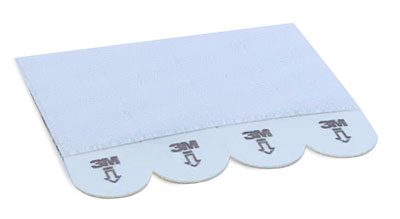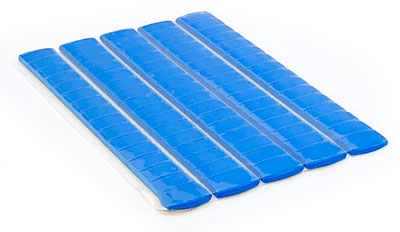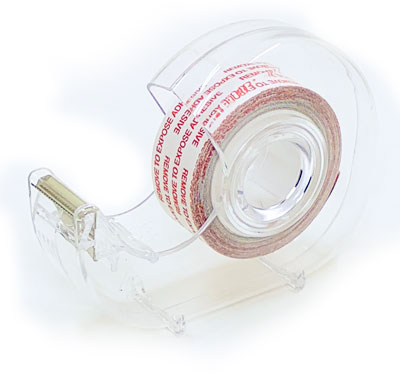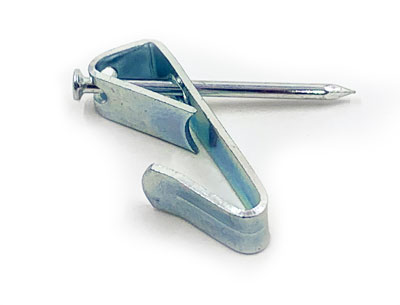Are you thinking of turning your poster collection into wall decor but can’t decide on the best way to hang them? Are you looking for renter-friendly wall decoration hacks? If your answer to both of these questions is yes, this article is for you! Signs.com shares different methods of displaying posters, some of which are ideal if you don’t want to ruin your paint or drill holes into the wall, while others work best with bigger, heavier framed posters.
Adhesives (for Lightweight Posters)
The use of adhesives is an easy and renter-friendly way to hang posters since you don’t have to use the drill. However, this method only works best for posters that aren’t framed and lightweight artwork that weigh less than 5 lbs.
Using adhesives is quite straightforward, too. Place your poster face-down on a clean, flat surface and apply the adhesive to all its corners, the center, and the midpoints between the corners.
Below is the list of adhesives you can use to display your poster and other small, lightweight wall decorations.
Double-Sided Removable Tape
Double-sided removable tape offers a gentle adhesive that doesn’t leave a mark on the wall or damage the poster. Some tapes come with a thick foam base that acts as a cushion to protect the poster and the wall paint, while absorbing vibrations to keep everything in place.
These removable tapes are sometimes called poster tapes that are often used to mount posters and lightweight decor on wood walls, painted walls, tiles, refrigerators, vinyl wallpaper, and glass.
3M Command™ Strips

3M Command Strips™ come in different shapes and sizes. They are sometimes included as a poster accessory because they are quick and easy to install, and don’t damage the wall with proper use. They also work well with textured and brick walls.
If you are looking to reuse or reposition your poster in the future, use the removable Command Strips variant.
It is also important to note that sometimes Command Strips can peel off the paint when you remove them from the wall. To avoid any damage, use a heat gun or a blow dryer to warm them up before scraping them off the surface.
Mounting Putty

Mounting putty often comes in small squares with a texture that’s almost similar to a dough. It’s excellent for displaying posters and other lightweight wall decor and works great on painted walls, wood, tiles, plastics, metals, and glasses.
Scotch™ Magic Tape

Magic Tape is virtually invisible once you apply it on posters and walls. In fact, you can even use it to fix tears on posters because it won’t show on the surface.
In addition, you can write on Magic Tape with a marker, pen, or pencil.
Heavy-Duty Mounting Tape
Heavy-duty mounting tape is coated with adhesive on both sides and is ideal for mounting slightly heavier posters. Some brands such as Gorilla have tapes that are weatherproof and provide a long-lasting bond.
Alternatives to Adhesives
If you don’t want to put any adhesive product on the poster directly, consider the alternatives below:
Slide Binders
Slide these binders through the top edge of the posters to turn them into wall art. For extra stability, you can add another binder at the bottom of the posters to give them more weight.
Next, hang your posters from rods, hooks, nails, or screws.
Binder Clips
Use these clips to hang posters, photos, postcards, and other smaller prints. However, be careful when using them to avoid creases, folds, and tears on the corners of the posters.
Bib Clips
You probably recognize these metal chains that your dentist uses to hold your towel in place. However, these bib clips also make a great way to display posters.
Hang these bib clips from a single hook or nail to upgrade your boring wall.
Pants Hangers

Display your favorite posters using pants hangers that have a frame and clips you can snap right on and off easily. Although you can use them as-is, you may want to paint the wood to give them a more curated look.
Tools and Hardware (for Large and Framed Posters)
For framed posters that weigh more than 5 lbs., you need special tools and hardware to distribute the weight over a larger area, thereby preventing them from tilting and falling.
Nails

The ideal nails to hang posters or any wall decor will depend on the wall. If your wall is made of concrete, use a hardened steel nails or concrete nails, which penetrate through the hard surface without bending.
Screws
Screws are generally stronger than nails, so they are a great option for hanging heavier framed posters. Just make sure you use the appropriate screws for the material the wall is made of.
Drywall Anchors
Drywall anchors, also called wall anchors, are inserts that you combine with their matching screws to create a strong mount. They work by gripping the drywall, resulting in stronger and more stable mount.
Hammer
Not all hammers are created equal. Thus, do not use a lightweight hammer on tasks that require heavy blows. Make it a habit to inspect your tools before starting any DIY project to ensure that all parts are secure.
Hammer Drill
When using a hammer drill, apply a steady and even pressure rather than use excessive force. Don’t forget to check for cables, pipes, conduits in or behind walls before drilling.
Safety Equipment
Use safety equipment and gears, such as goggles, earplugs, and dust mask when using hammer and power tools. Goggles are particularly important to avoid debris from hitting you in the face or eye.
Poster Care and Maintenance
If you ever wonder how can you maintain posters and keep them in pristine condition for many years to come, follow these tips:
For posters with creases and folds, you can iron the wrinkled surface using the lowest heat setting. To avoid damaging the graphics, position your poster face down and cover its back with a cotton sheet (e.g., bath towel).
- Other ways to remove wrinkles on a poster include using a bit of steam, adding weight, or spraying a special solution.
- Dust posters regularly using a soft, dry paint brush or a feather duster. Don’t use any moisture or cleaning products on paper or cardstock posters to avoid the risk of damage.
- Store or hang posters away from direct sunlight, as constant sun exposure can cause the graphics to fade. Finally, keep posters away from humidity, moisture, and extreme temperatures by storing them in dry, well-ventilated areas.
With these different methods to hang posters, you can now transform your plain wall into your home’s centerpiece.
Related Articles
Standard Poster Sizes – Signage 101
What Are The Best Poster Design Programs That Creative Designers Use?
How to Get Wrinkles Out of a Poster?
What are the Best Practices in Poster Design?




































